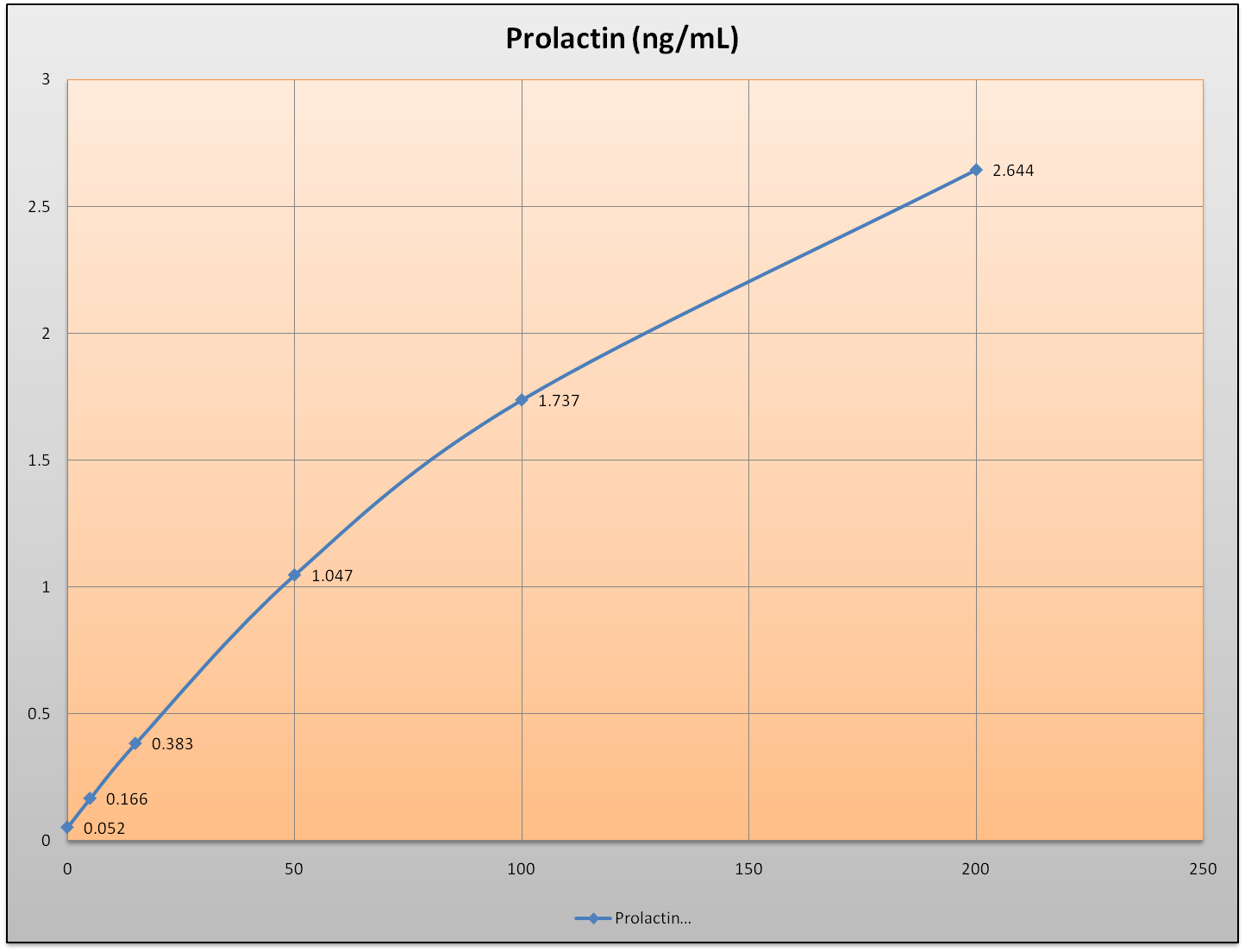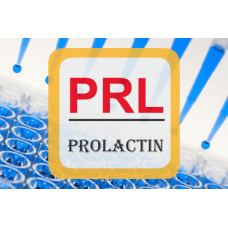Shopping Cart
0 item(s) - $0.00Prolactin ELISA
Availability: In Stock
Add to Compare
Enzyme Immunoassay for the Quantitative Determination of Prolactin in Human Serum
FOR RESEARCH USE ONLY. NOT FOR USE IN DIAGNOSTIC PROCEDURES
SUMMARY
Prolactin (PRL), also known as luteotropic hormone or luteotropin, is a protein that in humans is best known for its role in enabling female mammals to produce milk; however, it is influential over a large number of functions with over 300 separate actions of PRL having been reported in various vertebrates. Prolactin is secreted from the pituitary gland in response to eating, mating, estrogen treatment, ovulation, and nursing. Prolactin is secreted in a pulsatile fashion in between these events. Prolactin also plays an essential role in metabolism, regulation of the immune system, and pancreatic development.
Discovered in non-human animals around 1930 by Oscar Riddle at Cold Spring Harbor Laboratory on Long Island, New York, and confirmed in humans in 1970 by Henry Friesen prolactin is a peptide hormone, encoded by the PRL gene.
Although often associated with human milk production, prolactin plays a wide range of other roles in both humans and other vertebrates. (For example, in fishthe oldest known vertebratesan important function is probably related to control of water and salt balance.) Prolactin also acts in a cytokine-like manner and as an important regulator of the immune system. It has important cell cycle related functions as a growth-, differentiating- and anti-apoptotic factor. As a growth factor, binding to cytokine like receptors, it also has profound influence on hematopoiesis, angiogenesis and is involved in the regulation of blood clotting through several pathways. The hormone acts in endocrine, autocrine, and paracrine manner through the prolactin receptor and a large number of cytokine receptors.
Pituitary prolactin secretion is regulated by endocrine neurons in the hypothalamus, the most important ones being the neurosecretory tuberoinfundibulum (TIDA) neurons of the arcuate nucleus, which secrete dopamine (aka Prolactin Inhibitory Hormone) to act on the D2 receptors of lactotrophs, causing inhibition of prolactin secretion. Thyrotropin-releasing factor (thyrotropin-releasing hormone) has a stimulatory effect on prolactin release.
Several variants and forms are known per species. Many fish have variants prolactin A and prolactin B. Most vertebrates including humans also have the closely related somatolactin. In humans, three smaller (4, 16, and 22?kDa) and several larger (so called big and big-big) variants exist.
PRINCIPLE OF THE TEST
The United Immunoassay Prolactin Quantitative Test is based on the principle of a solid phase enzyme-linked immunosorbent assay.11,12 The assay system utilized mouse monoclonal anti-prolactin for solid phase (microtiter wells) immobilization and another mouse monoclonal anti-prolactin in the antibody-enzyme (horseradish peroxidase) conjugate solution. The test sample is allowed to react simultaneously with the antibodies, resulting in the prolactin molecules being sandwiched between the solid phase and enzyme-linked antibodies. After a 45 minute incubation at room temperature, the wells are washed with water to remove unbound labeled antibodies. A solution of Tetramethylbenzidine (TMB) is added and incubated for 20 minutes, resulting in the development of a blue color. The color development is stopped with the addition of 1N HCl, and the resulting yellow color is measured spectrophotometrically at 450 nm. The concentration of prolactin is directly proportional to the color intensity of the test sample.
EXAMPLE OF STANDARD CURVE
Results of a typical standard run with optical density readings at
450 nm shown in the Y axis against Prolactin concentrations shown in the X axis. This standard curve is for the purpose of illustration only, and should not be used to calculate unknowns. Each user should obtain his or her own data and standard curve.

| General | |
| ANALYTE GROUP | Prolactin |
| GROUPING | Hormones:Reproduction |
| PRODUCT NAME | ELISA |
| STORAGE | Store the kit at 2-8°C |
| COUNTRY OF ORIGIN | USA |
| DISCOUNTS | Bulk Packaging; High Volume |
| ELISA | |
| TESTS PER KIT | 96 (12 x 8) |
| CALIBRATION RANGE | 0 - 200 ng/mL (Recommended) |
United Immunoassay, Inc. © 2024


































